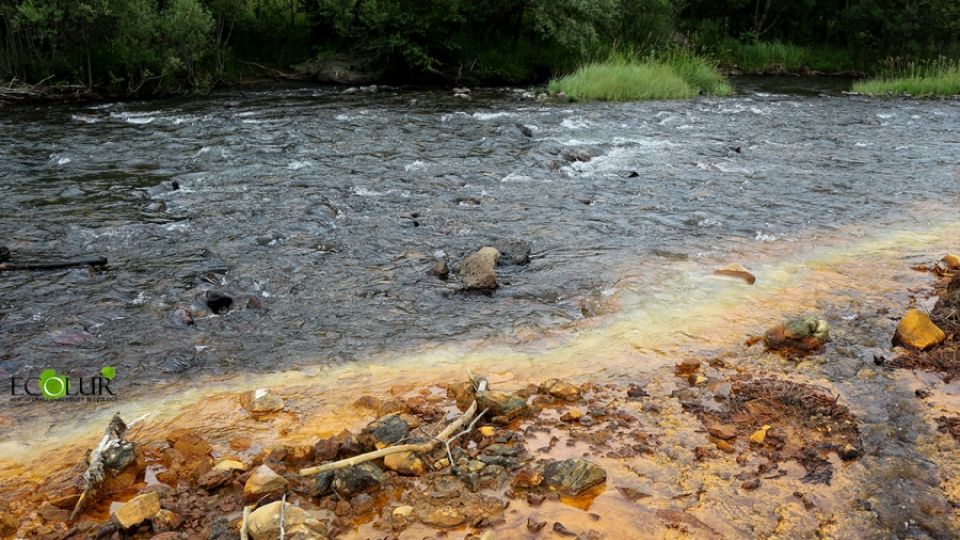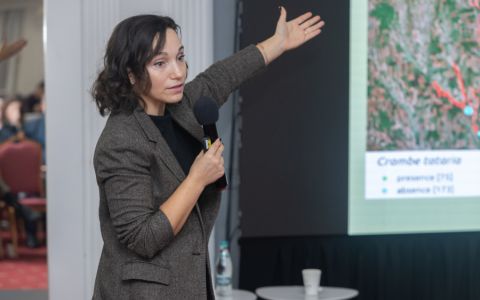The Czech organization Arnika, focusing on chemical safety, together with the Armenian organizations Center for Community Mobilization and Support and the information NGO EcoLur presented the first results of 2021 research on the impact of mining and metallurgical industry on human health and the environment. The results were obtained from analyzes of samples taken in the settlements of Urasar and Armanis of the extended community of Stepanavan, Lori marz, which are affected by the Armanis gold-polymetallic deposit and the industrial waste landfill.
The Armanis gold-polymetallic deposit and the industrial waste landfill are infrastructure facilities of the CJSC Sagamar mining company. Leaks from these objects spread freely in the environment, enter the Chknakh River, the fields and lands of the locals, are carried away by the wind, and together with the dust, enter the households. The results of the analysis of the content of chemicals in house dust, soil, and river sediments are already known.
The revealed concentrations of heavy metals in soils were compared with the Armenian soil standards, approved by order No. 01-N of 25 January 2010 of the Minister of Health of the Republic of Armenia “On Approving Sanitary Rules and Norms N 2.1.7.003-10 for Sanitary Requirements for Land Quality”.
Arsenic (As). In all soil samples taken in Urasar and Armanis, arsenic concentrations are 3 to 8 times higher than the maximum permissible concentration (MPC) for soil - 2 mg/kg. Arsenic was also detected in sediment samples taken from the Chknakh River in the Urasar area, where the concentration of arsenic was 28 mg/kg, 14 times higher than the norm.
Chromium (Cr). In all soil samples in Armanis, chromium concentrations are more than 10 times higher than the MPC for soil - 6 mg/kg. “It is noteworthy that the indicators for chromium in soil and river sediments are on average 2 times higher than the indicators of previously studied chromium pollution in 2018 in Akhtala, Teghut, and Alaverdi,” said Valeriya Grechko, project coordinator from Arnika.
Copper (Cu). High concentrations of copper were found in all samples of soil, river sediments, and dust taken in Urasar and Armanis. The concentration of copper is more than 20 times higher than the MPC in the soil - 3 mg/kg.
Nickel (Ni). High concentrations of nickel were found in all samples of soil, river sediments, and dust taken in Urasar and Armanis. Nickel concentrations are more than 10 times higher than the MPC for soil - 4 mg/kg.
Lead (Pb). The results showed a range of lead concentrations in soil, river sediment, and dust samples were taken at Urasar and Armanis. Lead in soil exceeded MPC in 3 out of 4 samples by 1.5-3 times.
Zinc (Zn). The results showed high concentrations of zinc in soil samples, river sediments, and dust taken in Urasar and Armanis, exceeding the MPC in soil - 23 mg/kg - 10 to 20 times.
Cadmium (Cd) and Molybdenum (Mo). The content of cadmium and molybdenum was found in all samples taken. However, it is still difficult to talk about the excess of the norms, since in the Armenian order on sanitary rules there is no indicator for these elements for comparison, and therefore, it is required to study international standards.
The same metals, in concentrations close to the norm, were also found in biomaterials taken from local residents. These metals are in the composition of the ore of the Armanis deposit, which, after the extraction of gold, silver, and other non-ferrous and expensive metals, becomes a source of pollution.
“So, another area has been identified in Lori marz, where arsenic and other toxic elements are becoming a real threat to the people living here, to their agricultural labor and development,” said Oleg Dulgaryan, chairman of the NGO Center for Community Mobilization and Support.
The research is being carried out by Arnika, a non-governmental organization from the Czech Republic, in cooperation with the Center for Community Mobilization and Support (CCMS) NGO and the EcoLur informational NGO under the Transition Promotion Program, funded by the Ministry of Foreign Affairs of the Czech Republic.








